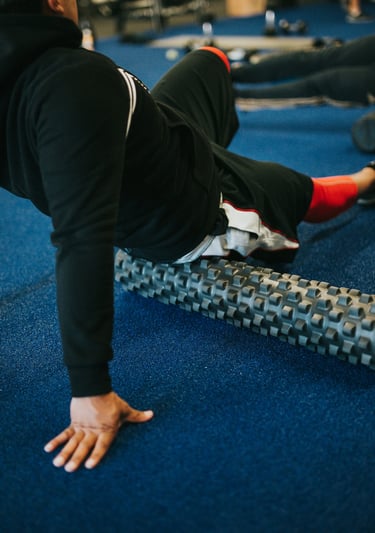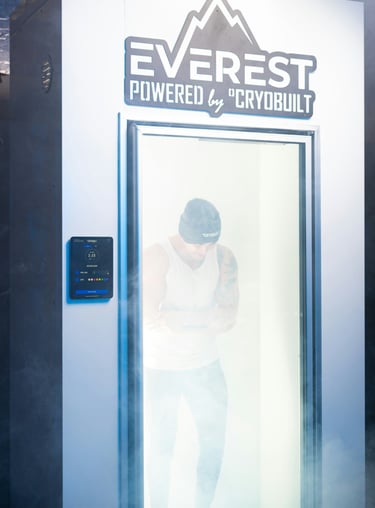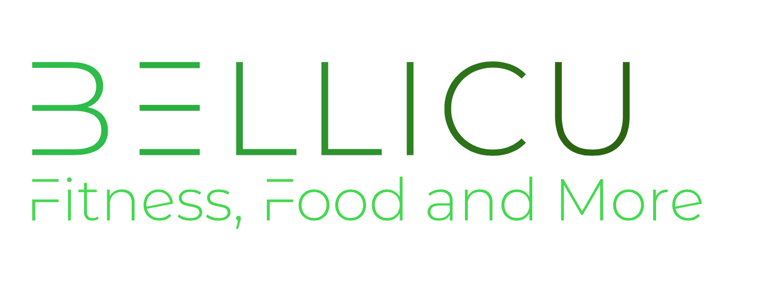

The Role of Recovery in Fitness
Tools and Techniques for Optimal Performance
Recovery is not just a passive break between workouts—it’s an essential, active phase of your training cycle that determines how effectively your body adapts to stress. Yet, for many fitness enthusiasts and even seasoned athletes, recovery is the most overlooked component of their routine. It’s easy to focus on visible progress—more reps, heavier lifts, faster miles—while underestimating the behind-the-scenes processes that actually make that progress possible.
When you work out, you're deliberately creating stress and minor damage to your muscle fibers, connective tissues, and even your nervous system. That damage is necessary for growth—but without structured recovery, your body doesn't get the chance to rebuild and strengthen. Think of recovery as the rebuilding phase of a construction project. The training is the demolition and groundwork; recovery is where the real structure is rebuilt—stronger, more resilient, and more efficient than before.
In fact, skipping proper recovery can completely stall your results. It can lead to:
Muscle fatigue and persistent soreness
Decreased performance and energy
Impaired coordination and concentration
Weakened immune function
Increased risk of injury and overtraining syndrome
Recovery isn’t just about avoiding negatives—it's also the key to unlocking peak performance. Athletes who prioritize recovery consistently outperform those who don’t. Why? Because recovery enhances muscle repair, supports hormonal balance, restores joint and connective tissue health, and improves mental clarity—all of which contribute to a higher-quality training experience.
In this article, we'll break down the science of recovery and explore powerful tools and techniques that support your body's regeneration process. From simple strategies like stretching and hydration to more advanced approaches like foam rolling, compression therapy, and optimized sleep, each plays a crucial role in helping you perform better, feel stronger, and stay injury-free.
Whether you're a casual gym-goer or a dedicated athlete, understanding and implementing a structured post-workout recovery routine can be the difference between constant plateaus and consistent progress.
Why Recovery Is Crucial for Fitness Success
Every time you train, especially at high intensity, you create micro-tears in your muscle fibers. These tears are necessary for muscle growth and strength—but only if your body has time to repair them. That repair process happens duringrecovery, not during the workout itself.
Skipping or minimizing recovery can lead to:
Chronic fatigue
Poor performance
Higher risk of injury
Plateaus in muscle growth
Mental burnout
On the flip side, optimized recovery leads to:
Faster muscle repair and growth
Improved flexibility and mobility
Reduced soreness and inflammation
Enhanced performance and energy
The Science Behind Post-Workout Recovery
Recovery is far more than just taking a day off or kicking back on the couch—it's a highly active, complex biological process that your body initiates the moment you finish training. Whether you’ve completed a high-volume strength workout, a long run, or an intense HIIT session, your body kicks into repair mode to rebuild and rebalance. Understanding what actually happens during this phase can help you make smarter choices that accelerate progress and reduce the risk of injury or burnout.
Here’s what’s happening behind the scenes:
Muscle Protein Synthesis (MPS):
During training, especially resistance or strength training, tiny micro-tears occur in your muscle fibers. Muscle protein synthesis is your body’s way of repairing those tears—fusing fibers back together and making them stronger and more resilient. But this process only occurs when there’s adequate protein intake and rest. Without it, muscles can’t grow or recover properly.Hormonal Regulation:
Exercise—especially intense or prolonged sessions—elevates cortisol, your body’s primary stress hormone. While this is normal and even helpful in small doses, chronically high cortisol can interfere with recovery, disrupt sleep, and promote muscle breakdown. Post-workout recovery helps lower cortisol levels and re-establish balance by increasing the production of anabolic hormones like growth hormone and testosterone, both of which play key roles in muscle repair, fat metabolism, and overall recovery.Glycogen Replenishment:
Glycogen is your muscles' primary source of energy during workouts, and it gets depleted, especially during long or intense sessions. Recovery is the window during which your body replenishes glycogen stores using carbohydrates consumed post-workout. If you skip this step, your muscles remain fatigued, and your next workout may suffer.Tissue Hydration & Electrolyte Balance:
You lose water and electrolytes (like sodium, potassium, and magnesium) through sweat, especially during cardio or heat-based training. These losses affect muscle contraction, nerve function, and cellular repair. Rehydrating during recovery helps maintain fluid balance, supports nutrient transport, and keeps joints and tissues lubricated—essential for preventing cramps, stiffness, and injury.
Without enough time or the right tools—like proper nutrition, sleep, hydration, and mobility work—your body can’t complete these recovery processes effectively. That’s when problems like overtraining syndrome, persistent soreness, reduced performance, and even immune suppression can creep in, derailing your progress and potentially leading to long-term setbacks.
In short: Recovery isn’t the opposite of training—it’s a crucial extension of it.


1. Stretching: Improve Flexibility & Circulation
Why it matters: Stretching post-workout helps reduce muscle stiffness, enhances blood flow, and improves long-term mobility. This, in turn, reduces injury risk and supports a full range of motion in future workouts.
Types of stretching to include:
Static stretching (e.g., hamstring hold or shoulder stretch): Best for post-workout.
Dynamic stretching (e.g., leg swings, torso twists): Better for warming up, but also helpful in recovery circuits.
Pro Tip: Spend 10–15 minutes stretching major muscle groups after each workout session.
Top Post-Workout Recovery Techniques
Let’s dive into some of the most effective and science-backed tools and techniques to support your recovery.
2. Foam Rolling: Myofascial Release for Soreness
Why it matters: Foam rolling, also known as self-myofascial release, targets trigger points in muscles and fascia (connective tissue). It breaks up knots, improves blood flow, and speeds up muscle repair.
How to do it effectively:
Roll slowly over sore areas (about 1 inch per second).
Spend 30–60 seconds per muscle group.
Focus on common tight areas like calves, quads, hamstrings, glutes, and upper back.
Popular tools:
Foam roller (standard or textured)
Massage balls
Theragun or percussion massagers


3. Adequate Sleep: The Ultimate Recovery Hack
Why it matters: Sleep is when most muscle repair, hormone regulation, and memory consolidation occur. Without 7–9 hours of quality sleep, your recovery stalls—regardless of what else you do.
Key recovery benefits of sleep:
Boosts growth hormone production
Supports immune function
Reduces inflammation
Enhances mental focus and mood
Tips for better sleep:
Stick to a consistent bedtime
Limit blue light exposure 1–2 hours before bed
Avoid caffeine late in the day
Create a cool, dark, quiet sleep environment
4. Nutrition Timing: Fuel Repair & Growth
Why it matters: What you eat after your workout directly affects how quickly and efficiently your muscles repair.
Ideal post-workout nutrients:
Protein (20–40g): Supports muscle protein synthesis
Carbohydrates (30–60g): Replenishes glycogen
Electrolytes & water: Restores hydration and supports cellular recovery
Smart post-workout snacks:
Protein shake with banana
Greek yogurt with berries
Chicken and sweet potato
5. Cold Therapy: Reduce Inflammation
Why it matters: Ice baths and cold plunges can reduce post-exercise inflammation and help ease muscle soreness. This can be especially helpful after high-volume or endurance workouts.
Options include:
Ice baths (10–15 minutes)
Cold showers
Cryotherapy sessions
Note: Cold therapy may blunt muscle growth if used immediately after strength training. Use it strategically based on your training goals.


6. Active Recovery: Low-Intensity Movement
Why it matters: Light exercise can enhance circulation without further taxing your muscles. This helps transport nutrients to muscles and remove waste products like lactic acid.
Examples of active recovery:
Walking or light jogging
Swimming
Cycling at a slow pace
Yoga or mobility work
When to use it: The day after an intense workout or on rest days.
7. Compression Gear: Support Circulation
Why it matters: Compression garments help increase blood flow and reduce muscle vibration, which can lead to less soreness and faster recovery.
Common uses:
Compression socks for runners
Sleeves for arms or calves
Compression leggings post-leg day
Some athletes even sleep in compression gear after intense training or competition.
8. Hydration: A Simple but Powerful Tool
Why it matters: Even mild dehydration can impair muscle recovery and increase soreness. Fluids help transport nutrients to cells, remove waste, and maintain joint lubrication.
Tips to stay hydrated:
Drink water consistently throughout the day
Add electrolytes after sweating heavily
Monitor urine color—it should be pale yellow
Creating a Personalized Recovery Plan
The best recovery routine is the one you can stick with consistently. A good place to start is the 3S Formula:
1. Stretch after every workout
2. Sleep at least 7 hours per night
3. Supplement your routine with foam rolling, nutrition, hydration, and cold therapy
Track how you feel day to day. Are you energized and motivated—or sluggish and sore? Let your recovery guide your training, not the other way around.
Mistakes to Avoid with Recovery
Skipping cooldowns: Always include 5–10 minutes of light cardio and stretching post-workout.
Overtraining without rest days: More isn't always better. Build in at least one full rest day per week.
Ignoring pain: Soreness is normal, but sharp pain or joint discomfort is a red flag.
Underfueling: Not eating enough, especially protein, can slow down your recovery significantly.
Final Thoughts: Recovery Is Training
In today’s fitness culture, it’s easy to get caught up in the grind. We celebrate the early mornings, the double sessions, the no-days-off mentality. But here’s the truth that every high-performing athlete and coach knows: Recovery is not a break from training—it’s part of the training.
Every lift, sprint, or burpee you do places stress on your body. That stress is necessary—it’s what sparks change. But unless you give your body the chance to adapt to that stress, you won’t get stronger, leaner, or faster. In fact, pushing too hard without sufficient recovery can sabotage your progress, leaving you chronically fatigued, mentally burned out, or sidelined by injury.
Recovery is where the transformation actually happens. It’s during this time that your muscles rebuild, your nervous system rebalances, your energy systems recharge, and your mind resets. Whether your goal is to build muscle, burn fat, boost endurance, or simply feel energized and capable in your daily life, recovery is the foundation that makes all of that possible.
By consistently incorporating smart recovery techniques—like stretching to maintain mobility, foam rolling to release tight fascia, quality sleep to stimulate muscle repair, and nutrition to refuel your body—you’re not being lazy. You’re investing in performance, longevity, and sustainability.
So next time you think about skipping your cooldown, your rest day, or that extra hour of sleep, remember:
You don’t grow while lifting—you grow while recovering.
Respect the process, and your body will reward you with results that last.
Essential Recovery Tools
Enhance your performance with effective recovery strategies for optimal results and injury prevention.
Stretching Techniques
Improve flexibility and reduce muscle tension through targeted stretching routines after workouts.
Foam Rolling
Relieve soreness and enhance recovery with effective foam rolling techniques for muscle repair.
Quality Sleep
Prioritize restorative sleep to maximize recovery and support overall athletic performance.


Post-workout recovery changed my training. Stretching and foam rolling made a huge difference in avoiding injury and improving performance. Highly recommend this guide!
Alex J.

★★★★★
